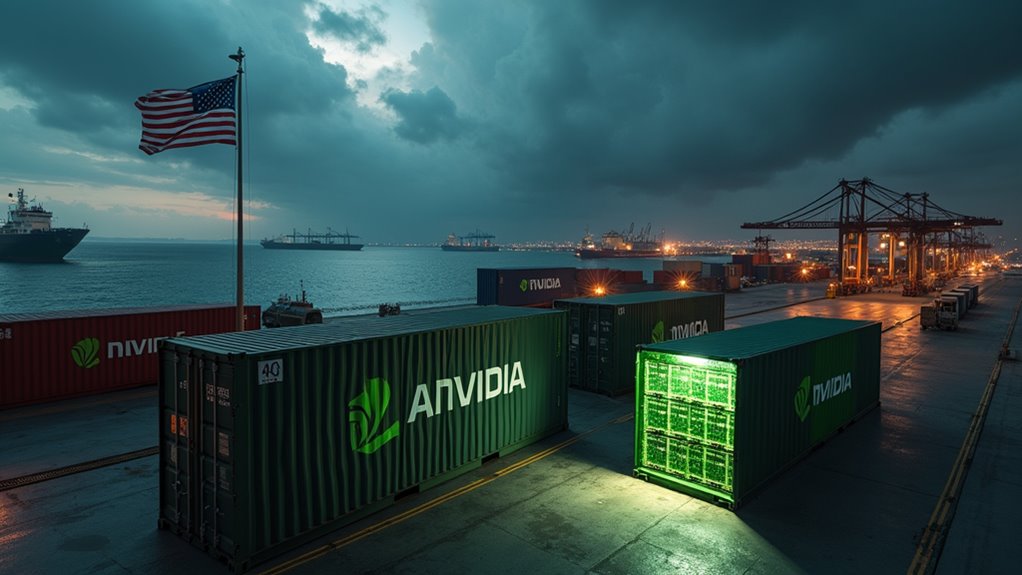China’s dodging of U.S. tech restrictions has spawned a clandestine network of intermediaries smuggling Nvidia’s AI chips across borders. While Chinese tech giants panic-bought $16 billion worth of H20 chips, mysterious front companies now provide the plausible deniability needed to keep silicon flowing. Meanwhile, homegrown alternatives like Cambricon struggle to catch up. It’s a high-stakes game of whack-a-mole where for every restriction, there’s a shadowy workaround waiting in the wings.
While the U.S. government tightens its grip on tech exports to China, a shadowy network of intermediaries and front companies has emerged to keep Nvidia’s coveted H20 chips flowing into the country. This cat-and-mouse game is playing out amid freshly implemented export controls from April 2025 that have left Nvidia facing a staggering $5.5 billion in charges.
The restrictions came despite earlier whispers they’d been paused after a certain *very expensive* dinner at Mar-a-Lago. You know the one—$1 million per plate, presumably not serving chicken nuggets.
Chinese tech giants weren’t caught napping, though. In what looks like the tech equivalent of panic-buying toilet paper during a pandemic, firms like Tencent, Alibaba, and ByteDance splurged approximately $16 billion on H20 chips in just three months. That shopping spree has created genuine shortages, with supply chains stretched thinner than excuses at a congressional hearing.
According to Aragon Research, the plot thickens with mysterious front companies popping up like mushrooms after rain. These intermediaries fundamentally function as high-tech smugglers with business cards, providing Nvidia with plausible deniability while giving Chinese firms access to restricted tech. It’s the corporate equivalent of “I didn’t sell it to THEM, I sold it to THIS guy” *wink wink*.
For Nvidia, the situation is particularly thorny. China represents a massive chunk of their market, and now they’re caught between U.S. regulations and their quarterly earnings targets. Talk about being stuck between a rock and a hard balance sheet.
Meanwhile, Chinese companies aren’t sitting idly by. The U.S. has mandated that Nvidia must apply for licenses for each sale to China, creating a bureaucratic minefield for the chip giant. Local government entities have even reportedly sent messages advising stoppage of orders to the country’s largest AI companies. Domestic chip developers like Cambricon and SiCarrier are racing to create homegrown alternatives—though they’re still playing catch-up in the AI chip marathon.
The indefinite nature of these restrictions creates a fog of uncertainty that nobody—not Nvidia, not Chinese tech firms, and certainly not those shady intermediaries—knows how to navigate fully. One thing’s clear: in this high-stakes tech tug-of-war, the rope is getting increasingly frayed.









